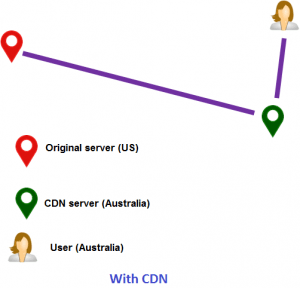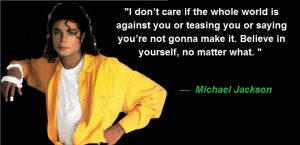How to Avoid Duplicate Content

What is duplicate content?
Duplicate content is a common term used in the field of Search Engine Optimization (SEO). Duplicate content means a similar content that appears in more than one location (URL) on the web.
Handling duplicate content is a headache for search engines
The duplicate content is highly troubling the Giant search engines like Google. If the same content is found on the different URLs, then it will be difficult for the search engines to identify which URL is original or best. If two URLs have the similar content, search engines have to choose the best one and display at the topmost results. If search engines display both URLs on the same page of search results and users clicks on both URLs, then they will find the same content on both web pages which results in poor user experience.
Therefore, search engines have to display only one unique result. But search engines do not know which search result should be included or excluded. Search engines are trying their level best to show unique and best search results to the users. In this process, some websites may be penalized for duplicate content.

If you have copied a small piece of content from other website and pasted into your website, then it is also considered as the duplicate content. But if the overall duplicate content of your website is low means the chances of Google penalty is very less.
However, if your website contains a huge duplicate content then the chances of Google penalty is very high.
In some cases, people intentionally duplicate the content across different web pages, domains, or URLs in an attempt to manipulate the search engines to rank high in the search engine results. These types of deceptive practices can result in a poor user experience. Visitors do not like the same content on multiple web pages.
Duplicate content not only affects the websites which display duplicate content but also search engines which display a set of search results. Search engines which display duplicate content websites in a set of search results will result in a poor user experience. So the Giant search engines like Google has taken it as a serious matter. Google does not like the websites which have completely or almost duplicate content.
Types of duplicate content
Duplicate content can be present either within the same domain or across the different domains. Based on this duplicate content is classified into two types: Internal duplicate content and external duplicate content.
Internal Duplicate Content
The duplicate content that appears within the same domain is called internal duplicate content. For example, if both www.netizenshouse.com and www.netizenshouse.com/index.html are having the same content then the search engines consider it as a duplicate content. In order to avoid this, we need to redirectwww.netizenshouse.com/index.html to www.netizenshouse.com.
If you have purchased a domain (eg:netizenshouse.com) and linked the website to this domain, you can access your website either from netizenshouse.com or www.netizenshouse.com. That means you can access the same content either from www URL or non-www URL. For example, you can access the same content from www.netizenshouse.com/firstpost.html and netizenshouse.com/firstpost.html. Most web browsers and web servers consider both www and non-www as the same URL.
But some search engines like Google and some web servers consider www and non-www as different domains. So if you serve the same content on both www and non-www domains, Google consider your content is duplicated on two different domains. In order to avoid this, we need to instruct Google to index, either www or non-www domain. This can be done by using Google Webmaster Tools. By using Google Webmaster Tools, you can instruct Google which one has to be indexed (either www domain or non-www domain)
You can also avoid duplicate content by redirecting www domain to non-www domain or redirecting non-www domain to www domain. For example, if you have redirectednetizenshouse.com to www.netizenshouse.com, then the user who tries to visitnetizenshouse.com will be redirected to www.netizenshouse.com page. So Google will index only www.netizenshouse.com web pages. The process of redirecting users from one URL to another desired URL is called canonicalization.
Thus, internal duplicate content is avoided by using a redirection method or Google webmaster tools.
The internal duplicate content on your website can be easily detected by using internal duplicate content checkers like Siteliner.
External duplicate content
The duplicate content that appears across the different domains is called external duplicate content. For example, your domain or website www.netizenshouse.com and other domain or website such as www.abcdef.com contains the similar content, then it is said to be external duplicate content.
External duplicate content often occurs due to the copying of content from others websites. For example, if you have copied the content from other popular website and pasted it into your website, then your website content is said to be duplicate content.
For search engines like Google, it is difficult to identify the original content from duplicate content. In most cases, websites which copied most of the content from other websites will get penalized by Google. However, Google has not revealed how it identifies the duplicate content websites from original websites. So if you have a habit of copying the content from other websites, stop it now. Otherwise, someday your website may be severally penalized by Google.
If someone is copying your content, you can easily find them by using online tools such as Copyscape. Copyscape is the best online tool to find the stolen content. All you need to do is just copy and paste your website URL in the Copyscape search box and hit enter. All the remaining work is done by the Copyscape. It will show all the website links that have copied your content. If no search results are shown, it means that no one has copied your content.
Before publishing content into your website, check whether your content is unique or not. This can be done by using plagiarism checkers like SmallSeoTools. SmallSeoTools is the most popular plagiarism checker tool. By using this tool, you can identify how unique your content is. All you have to do is copy and paste your content into plagiarism checker content box and click “Check Plagiarism” button. The plagiarism checker does all the remaining work. If your content is more than 90% unique it means that your website content is highly unique and Google loves such kind of unique content. On the other hand, if your website content is less than 70% unique, it means that your website content is plagiarized and Google hates such kind of duplicate content.








